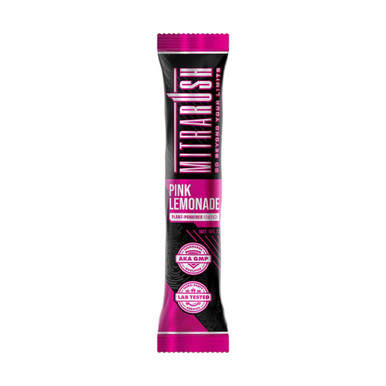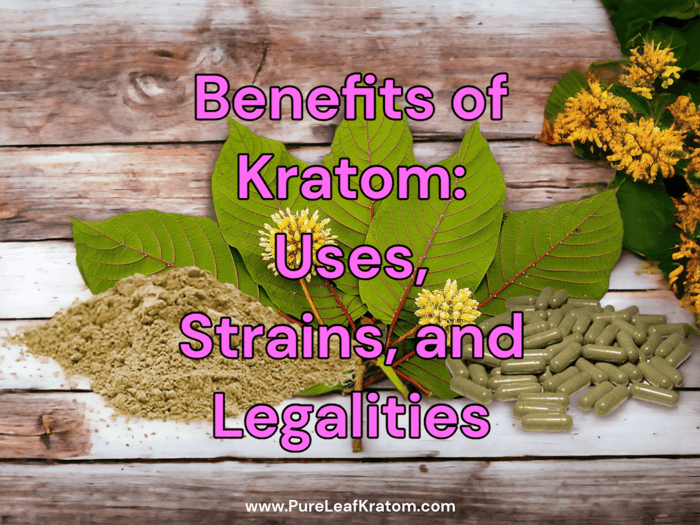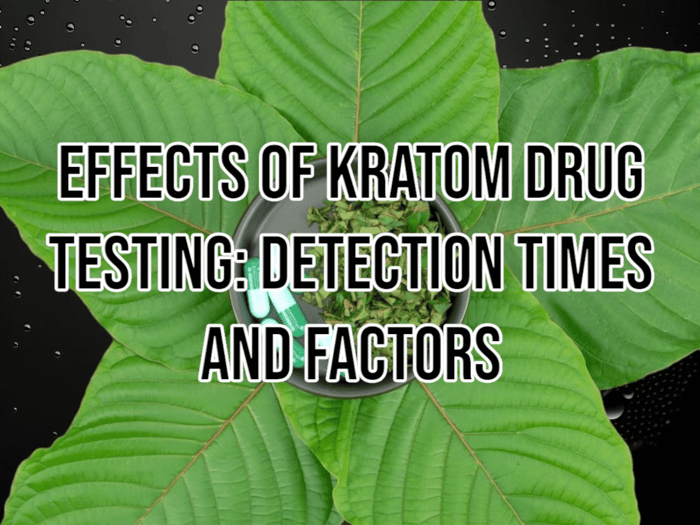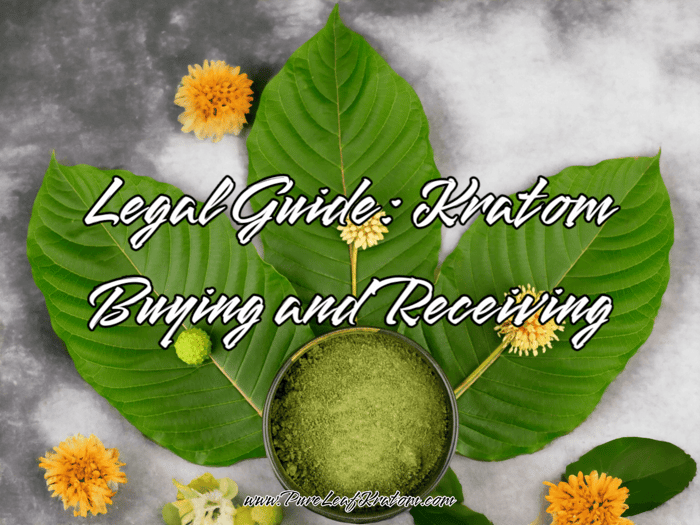
Kratom for Wellness: Proven Benefits and Safe Usage
Unveiling the World of Kratom
Shrouded in mystery and steeped in tradition, Kratom is a unique herbal supplement that is gaining popularity around the globe. Native to Southeast Asia, the Kratom plant (Mitragyna speciosa) is a member of the coffee family and has been used for centuries in traditional medicine for its versatile health benefits. Being a powerful analgesic, mood enhancer, energy booster, and stress buster, it is now being recognized as a promising alternative to conventional medical treatments.
Hush Kratom Nano Extract Shot 10mL

$12.95
Featuring a new cutting-edge way to consume your kratom! Only $14.38 Our Hush Kratom Nano Kratom Shot utilizes the power of nano-technology to enhance the...… read more
The Kratom Plant: Beyond Appearances
The Kratom tree thrives in the tropical rainforests of countries like Thailand, Indonesia, and Malaysia. Mature trees can reach a height of 50 feet or more, flaunting glossy leaves and clusters of small, ball-shaped flowers. The tree's leaves are where the magic happens – they contain several psychoactive compounds, most notably mitragynine and 7-hydroxymitragynine, which are thought to be responsible for most of Kratom's effects.
A Myriad of Names and Varieties
Known by various names like Biak-Biak, Ketum, and Ithang depending on where it originates, Kratom is a versatile plant available in a variety of strains. Each strain bears its unique characteristics and effects, rendering it suitable for different uses. The complex yet fascinating part is that the differing effects are largely dictated by the concentration of active compounds in each strain. This meticulous selection and consumption process make Kratom a multifaceted herb that can cater to a diverse array of health needs.
The Spectrum of Kratom Uses: Then and Now
Tracing back to its historical usage, locals in Southeast Asia traditionally chewed Kratom leaves to relieve fatigue, enhance mood, and manage pain. In its homeland, this humble plant even found its way into ritualistic ceremonies, signifying its cultural importance.
Fast forward to the present day, the scope of Kratom’s use has broadened significantly, thanks to the advent of scientific research, technological advancement, and globalization. Today, Kratom is used not just for its analgesic effect but also for its potential role in mood elevation, energy boosting, and stress relief, all of which have been affirmed by burgeoning scientific evidence and an array of anecdotal experiences.
History and Legality of Kratom
Kratom, botanically known as Mitragyna speciosa, is a tropical tree native to Southeast Asia. Its leaves have been used traditionally for centuries for their medicinal properties.
Historical Origins and Traditional Uses of Kratom
In its native lands such as Thailand, Malaysia, and Indonesia, Kratom has been used by locals as a natural remedy for various ailments. Leaves were chewed or brewed into a tea to relieve pain, boost energy and mood, alleviate anxiety and depression, and aid in the withdrawal from opium addiction.
Modern Discovery and Use of Kratom in Western Medicine
Western recognition of Kratom arose in the 19th century when Pieter Korthals, a Dutch colonial botanist, documented its use. However, it wasn't until the early 21st century that the potential benefits of Kratom started to gain attention in Western medicine as a possible opioid alternative.
Controversial History: From an Unknown Herb to a Debated Substance
The rise of Kratom use in the West came with its controversy. As its use escalated, so did reports of dependency, addiction, and severe side effects, which led to its reputation as a potentially harmful substance. Regulatory bodies like the FDA have raised concerns over its safety and efficacy.
Current Legal Status and Restrictions in Different Countries and States
Different parts of the world have diverging attitudes towards Kratom. In its native region of Southeast Asia, Kratom is generally illegal. Interestingly, despite its natural abundance in these areas, countries like Thailand and Malaysia have banned its use years ago. The United States, on the other hand, has a more mixed stance where the legality of Kratom varies from state to state. In certain areas, it is entirely legal and available for purchase, while in others it is outlawed.
In diving deeply into the world of Kratom, it's essential to understand that Kratom is not a one-size-fits-all solution. Similar to tea or coffee, there are a variety of strains, each offering its unique effects. There are primarily three prominent strains of Kratom: Red Vein, White Vein, and Green Vein.
Red Vein Kratom
The Red vein variety is well-regarded for its pain-relieving properties. Commonly used as a mild sedative, it is also Benefits promoting a restful sleep, making it a great choice for individuals seeking stress relief or dealing with insomnia.
White Vein Kratom
Then comes White vein Kratom, a strain known for its stimulant-like effects. Users often report feelings of increased energy and focus, making it a preferred choice for combating fatigue or enhancing productivity.
Green Vein Kratom
Last but not least, Green vein Kratom is viewed as the middle ground between its red and white counterparts. It is known for providing a mild energy boost and mood lift without the intensity some might experience with the white strain.
Krave Kratom Powder White Maeng Da

$9.89
Krave Kratom Powder White Maeng Da Krave Kratom Powder White Maeng Da is one of the best strains around! This particular strain was harvested in...… read more
Different Kratom Product Formats
In terms of product formats, Kratom is typically available in four main forms: powder, capsules, tea, and extracts. Choosing between these largely depends on one's preferences for usage.
Kratom Powder
The most common, Kratom powder, is derived from dried and ground Kratom leaves. Users often mix the powder with a drink or incorporate it into food.
Kratom Capsules
Kratom capsules offer a convenient alternative for those who prefer a more traditional pill-like delivery method. This format also allows for precise dosage control.
Kratom Tea
Kratom tea, brewed from either powder or leaves, offers a more soothing and ritualistic mode of consumption. It integrates seamlessly into a daily tea drinking routine.
Kratom Extracts
Then there are Kratom extracts, a highly concentrated form of Kratom that is often more potent and requires a lower dose. It needs to be used cautiously due to its strength.
In conclusion, the strain and product format of Kratom you choose should align with your desired benefits and personal preference. Hence, experimentation may be necessary to identify your ideal strain and product format.
Understanding How Kratom Works
The therapeutic effects of Kratom are primarily attributed to the active compounds it contains, namely mitragynine and 7-hydroxymitragynine. These substances, which are chemically classified as alkaloids, make up a significant portion of Kratom's makeup and are believed to be responsible for its pain relief, mood-lifting, and energy-boosting properties.
A Look at the Active Compounds in Kratom
Research has identified more than 20 biologically active compounds in Kratom, but mitragynine and 7-hydroxymitragynine are both particularly noteworthy for their impact on the human central nervous system. Mitragynine, the more prevalent of the two, can make up to about 60% of the total alkaloid content of the plant. 7-hydroxymitragynine, while lesser in quantity, is significantly more potent in producing analgesic and sedative effects.
Understanding the Psychotropic Effects
Herein lies the complexity of Kratom's effects: both mitragynine and 7-hydroxymitragynine act as agonists on the µ-opioid receptors, similar to drugs like morphine. However, unlike traditional opioids, these compounds do not recruit β-arrestin, a protein involved in negative opioid side effects such as respiratory depression and constipation, making Kratom a potential opioid alternative.
How Kratom Affects the Body and Mind
Kratom's ability to bind to opioid receptors does not only give it pain-relief and mood-lifting properties but also results in a stimulating effect when consumed in small dosages. This can be helpful for fatigue relief and enhancing focus and productivity. However, when consumed in larger quantities, it can have a sedative, relaxant effect that aids in stress relief and can potentially serve as an aid for those coping with anxiety or depression.
The Dual Stimulating and Sedative Effects
The interplay between Kratom's stimulant and sedative effects is due to the varying influence of mitragynine and 7-hydroxymitragynine at different doses. In smaller doses, the stimulant effect is more pronounced, which can be beneficial in boosting energy and increasing alertness. Conversely, higher doses of Kratom may lead to more potent sedative effects, beneficial for managing chronic pain, and even aiding in opioid withdrawal.
The health benefits of Kratom encompass a wide range of therapeutic effects including pain relief, mood lifting, increased focus, and stress reduction. Most of the benefits are due to the active compounds, Mitragynine and 7-Hydroxymitragynine, that interact with opioid receptors in the brain.
Kratom as a Tool for Pain Relief
Kratom has long been hailed as a natural remedy for pain relief. Studies suggest that its active component, Mitragynine, demonstrates significant analgesic properties by binding to the same opioid receptor subtypes as endorphins, the body's natural painkillers. This action may be responsible for the pain-relieving qualities of Kratom frequently reported by users. This attribute potentially lends itself to those struggling with chronic pain conditions.
Use of Kratom for Energy and Focus
At low doses, Kratom acts as a stimulant, boosting energy levels similar to the effects of caffeine. The alkaloids in Kratom can increase blood circulation, improving oxygen supply to the brain, thereby enhancing concentration and mental acuity. This effect has traditionally been used by laborers in Southeast Asia to combat fatigue and improve work productivity. However, scientific research is needed to fully support these anecdotal claims.
Kratom's Role in Mood Lifting
Kratom's mood-enhancing effects may be attributed to the influence it has on the levels of dopamine and serotonin in the body, neurotransmitters associated with positive feelings and euphoria. By releasing these hormones, small doses of Kratom may help alleviate feelings of anxiety and depression, providing a natural mood lift.
Kratom for Stress Relief
Similar to its mood-lifting properties, Kratom also has potential stress and anxiety-relieving benefits. Its action on the µ-opioid receptors may have a calming effect on the central nervous system, thereby alleviating symptoms of stress. However, like all potential therapeutic properties of Kratom, further research is necessary.
Kratom’s Potential Anti-Inflammatory Effects
The presence of certain alkaloids in Kratom, like Rhynchophylline and Epicatechin, has been associated with anti-inflammatory benefits. This property could make Kratom an exceptional natural remedy for conditions associated with inflammation, such as arthritis and inflammatory bowel disease. This hypothesis, however, requires further scientific substantiation.
In any discussion about the benefits of Kratom, it's crucial to recognize the potential side effects and risks associated. While it can offer therapeutic benefits like pain relief, mood lift, and energy boost, certain adverse effects may present, especially with excessive or long-term use.
Common and Rare Side Effects of Kratom
Research indicates that Kratom use can lead to common side effects like nausea, dry mouth, constipation, itching, and sweating. Its consumption, especially in high doses, may also cause more serious side effects like hallucinations, seizures, and liver damage.
Potential Long-Term Risks of Kratom
Regular and prolonged usage can potentially lead to tolerance, dependence, and even withdrawal symptoms. Tolerance occurs when the body becomes accustomed to the effects of Kratom, leading to the need for increased dosages to achieve the same benefits. Dependency can develop, with users experiencing physical discomfort or cravings when Kratom is not consumed. Withdrawal symptoms like muscle aches, insomnia, irritability, and aggression have been reported amongst regular users. The potential for such risks reinforces the need for careful dosage control and responsible use.
Interactions with Other Substances
Interactions between Kratom and other substances, especially prescription drugs, can amplify these side effects and pose health risks. These interactions can lead to complications like respiratory depression, seizures, or even death, particularly with substances like opioids, benzodiazepines, and alcohol. Kratom might also potentially interact with over-the-counter medications and substances like caffeine. It's crucial to consult with a healthcare provider before starting to use Kratom, particularly for those on other medications.
MitraRush Kratom Extract Powder Energy Drink Pink Lemonade

$9.95
Mitrarush Kratom Extract Powder Energy Drink Pink Lemonade Skip the morning cup of coffee or pre-workout and opt for Mitrarush Kratom Energy Drink Powder! You’ll...… read more
Risks of Using Adulterated Products
Given the unregulated nature of the Kratom market, users run the risk of consuming adulterated products contaminated with harmful substances. To mitigate this risk, it's encouraged to purchase Kratom from reputable sources that offer tested, high-quality products.
How to Use Kratom Safely
Favoring responsible and mindful use, the consumption of Kratom requires a certain level of intentionality and consideration. This involves a keen understanding of the dosage, frequency, optimal timing, and the specific strain or product format in use. It also includes steps to prevent potential tolerance, dependence, and unintended side effects.
Starting Out: Dosage and Frequency
For those testing the benefits of Kratom for the first time, adopting the 'start low and go slow' strategy is recommended. Keeping the initial dose between 1 to 2 grams allows the body to accommodate the herbal supplement. Monitoring the body's reaction for a period of 30-40 minutes is advised. If no effects are felt after an hour, a small increment of 0.5 grams can be added. It's worthwhile to remember that the effects of Kratom vastly depend on the individual's body weight, tolerance level, metabolism, and the empty or full state of the stomach.
While there's no specific prescription for frequency, it's suggested to use Kratom sparingly, ideally two to three times a week at most. Daily use can lead to tolerance or dependence, mainly if potent strains or high doses are regularly consumed.
Knowing the Strain and Product Format
Given that different strains of Kratom have varying effects, from pain relief to energy boost, knowing the strain suitable for your individual needs is essential. Moreover, the product format—be it powder, capsules, tea, or extracts—also plays a role in the onset and duration of the Kratom effects. Powder and tea, for example, have quicker onset times, while capsules can offer more regulated and sustained effects.
Preventing Tolerance and Dependence
The duration and frequency of Kratom usage need careful regulation to avoid tolerance and dependence. Steps such as keeping track of your dosage, rotating strains, and scheduled breaks in between usage can help maintain Kratom’s effectiveness over time and reduce the risk of dependency.
In conclusion, acting responsibly and mindfully while using Kratom ensures the maximum benefit and minimal harm from this multifunctional herbal supplement.



